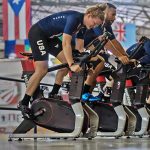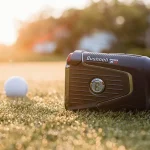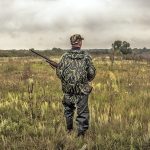Retail sales of athletic footwear rose 0.2% during the six-month period, October 2003 through March 2004, according to data released by the National Sporting Goods Association (NSGA). Sales for the six-month reporting period were $6.26 billion versus $6.25 billion for the same period the previous year.
Sixteen of the 23 types of sport and athletic footwear covered in the survey showed sales increases during the six-month period. Among categories with more than $300 million in sales for the six-month period, jogging/running shoes showed the strongest increase, 12%. Basketball shoes followed with a 7% increase. Gym shoes/sneakers showed a modest 2% increase, while fashion sneakers declined 4%.
Among major shoe categories, only cross training shoes and hiking boots showed significant declines, down 12% and 8% respectively.
Cleated footwear showed respectable increases. Football shoes were up 9%; soccer and baseball/softball shoes each rose 5%.
“In 2002, we saw highly promotional pricing strategies being used by many retailers during this period. The rise in average prices indicates this was less prevalent in 2003,” said NSGA Vice President of Information & Research Thomas B. Doyle. “Of the 25 types of athletic and sport footwear, only eight posted declines in average price versus 14 last year.
“The Association had projected a 2% increase in athletic footwear sales for 2004. Ground needs to be made up if that projection is to be met,” Doyle said.
The largest categories in terms of dollars spent by consumers during this six-month period were walking shoes ($1.52 billion), running/jogging shoes ($864.7 million), cross training shoes ($727.2 million), and gym shoes/sneakers ($668.7 million).
For the six-month reporting period, full-line sporting goods stores accounted for 13.8% of athletic footwear unit sales, an increase from 12.5% last year. Specialty athletic footwear stores lost market share in athletic shoe categories, while discount stores were flat. Specialty athletic footwear stores claimed 11.5% of the athletic footwear market versus 12.5% the previous year. Discount stores held at 22.0%.
Online/internet sales were 3.0% of the total athletic footwear market, up from 2.8% the previous year.
To gather the data, NSGA surveys a total of 40,000 households — 20,000 households twice a year. The athletic footwear categories covered include aerobic, baseball/softball, basketball, boat/deck, bowling, cheerleading, cross training, fashion sneakers, fitness, football, golf, gym shoes/sneakers, hiking, hunting, jogging/running, skateboarding, soccer, sport sandals, tennis, volleyball, walking and water sports.
The full report on the athletic footwear market will be part of the “The Sporting Goods Market in 2005,” which will be available from NSGA in May 2005. The current Sporting Goods Market report provides footwear data for the 12-month period of October 2002 through September 2003. For information on NSGA research, contact Tom Doyle at: tdoyle@nsga.org.














